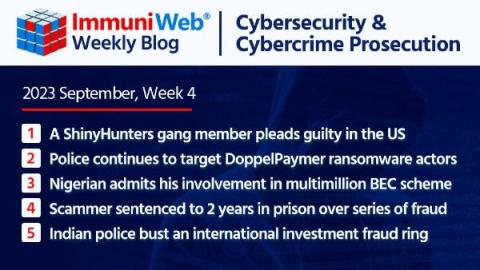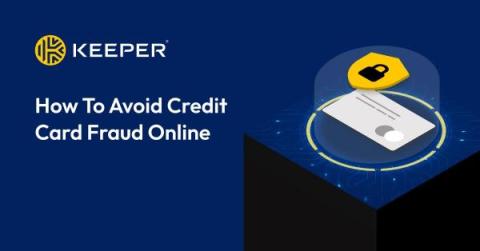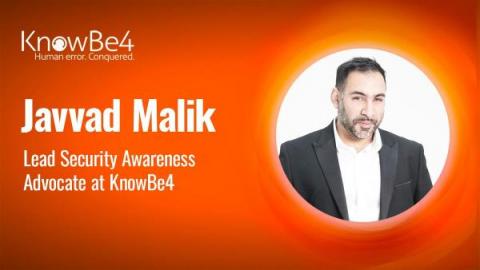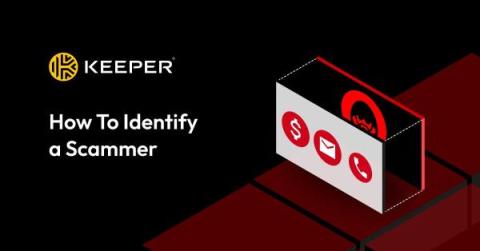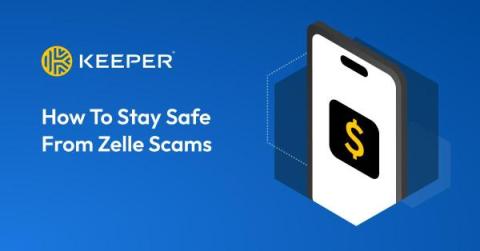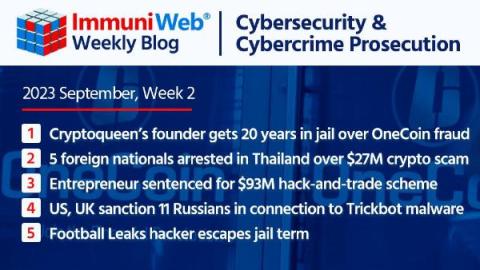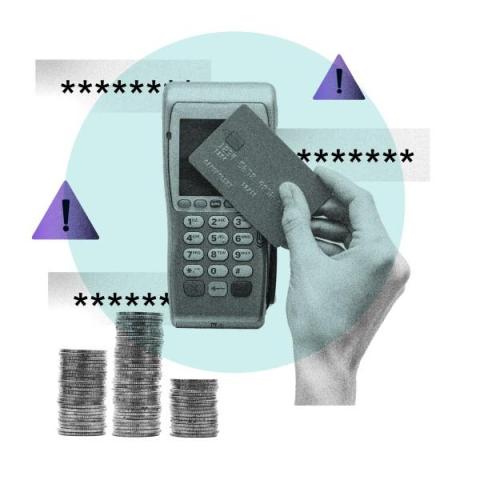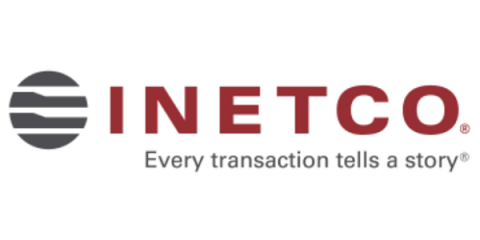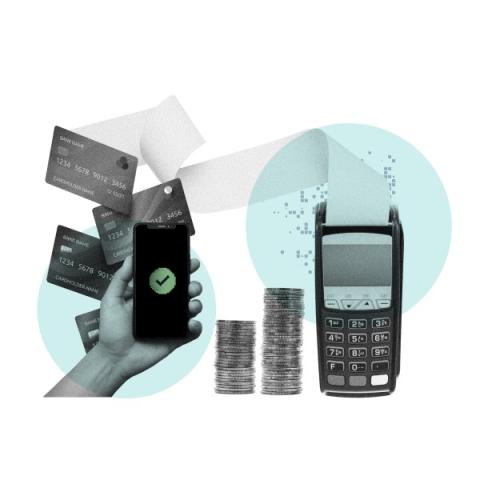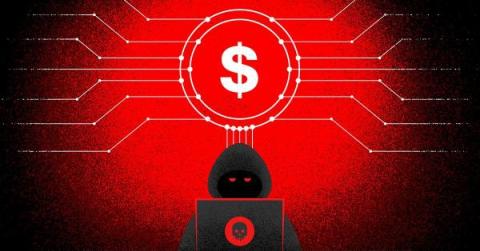Security | Threat Detection | Cyberattacks | DevSecOps | Compliance
September 2023
A ShinyHunters Gang Member Pleads Guilty In The US
Read also: Ukraine and Germany hunt for DoppelPaymer ransomware actors, a Nigerian scammer faces up to 20 years in prison, and more.
How To Avoid Credit Card Fraud Online
You can avoid credit card fraud online by securing your online accounts, avoiding saving your payment information on websites, being cautious of phishing scams, keeping a look out for credit card skimmers and more. Continue reading to learn more about how you can avoid credit card fraud online and how to report it if you’re a victim.
INETCO is Making Waves in the BC Tech Sector - INETCO is Named a Finalist for the Gamechanger Ambition Award
Each year, the BC Tech Association celebrates the remarkable achievements of the British Columbia technology community through the Technology Impact Awards (TIA). The Gamechanger – Ambition Award, is a testament to a company’s drive to address significant challenges, lead with conviction, and leverage technology to shape a better future.
Deepfakes: The Threat to Reality and How To Defend Against It
Deepfakes have emerged as a serious concern in the digital landscape, presenting a significant threat to truth and trust. While it can be fun to swap your face with the Mona Lisa, there are some significant concerns around how these can be used to deceive us. Let’s take a look at some of the methods used, and ways to spot red flags.
Cybercriminals Use Google Looker Studio to Host Crypto Scam to Steal Money and Credentials
Security researchers at Check Point have discovered yet another attack that leverages legitimate web applications to host attacks in order to bypass security scanners. One of the easiest ways for a security solution to spot a phishing attack is to evaluate the webpage a malicious link takes the recipient to.
TikTok Impersonations of Elon Musk Scam Victims of Their Bitcoin
There’s been a surge of Elon Musk-themed cryptocurrency scams on TikTok, BleepingComputer reports. The scammers inform the victims that they can claim their reward after spending a small amount of bitcoin (about $132) to activate their account. “BleepingComputer tested one of the giveaways to see how it works and found that almost all utilize the same template, which pretends to be a crypto investment platform,” BleepingComputer says.
How To Identify a Scammer
You can identify a scammer by spotting red flags such as sudden requests for your personal information, grammatical and spelling errors in emails, offers that seem too good to be true, along with other signs. Read on to learn about the red flags that can help you identify scammers and what you can do if you’ve fallen for a scam.
Scam-as-a-Service Classiscam Expands Impersonation in Attacks to Include Over 250 Brands
Now entering its third year in business, the phishing platform, Classicam, represents the highest evolution of an “as a service” cybercrime, aiding more than 1000 attack groups worldwide. What do cybercriminals need for a successful attack? A convincing email, a list of potential target email addresses, and a website to extract payment details, bank login credentials, etc. And it’s the last part that’s usually the barrier to market for those that want to get into cybercrime.
How To Stay Safe From Zelle Scams
To stay safe from Zelle scams, you should only send Zelle payments to people you know, be wary of urgent payment requests, use a different app to send and receive payments from strangers, use strong passwords and enable Multi-Factor Authentication (MFA) on your banking accounts. Continue reading to learn about common Zelle scams and how to avoid falling victim to them.
Romance Scams That Run Your Crypto Wallet Dry
Scammers are using dating sites to lure victims into phony cryptocurrency investment schemes, according to Sean Gallagher at Sophos. These types of investment scams are known as “pig butchering,” loosely translated from the Chinese phrase “sha zhu pan.” In this case, the scammers convince the victim to participate in a liquidity pool arrangement, a legitimate but risky cryptocurrency investment technique.
New Scam Impersonates QuickBooks to Steal Credentials, Extract Money
Establishing urgency through a false need to “upgrade” or lose services, this new attack takes advantage of the widespread use of the popular accounting app to attract victims. Impersonation in phishing attacks only works if the target has an established rapport or relationship with the sender.
Cryptoqueen's Founder Sentenced to 20 Years in Jail for a Fake Cryptocurrency Scheme
Read also: US and UK sanction 11 Russians in connection with Trickbot malware, Football Leaks hacker escapes jail term, and more.
Protection from Carding: Inside Russian Carding Fraud Part 4
Welcome to the fourth and final part in our series on credit card fraud originating in Russia. After covering the basics of what carding is, why so much of it is perpetrated by Russian speakers, then digging deeper into how carders operate, in this part we’ll explore ways to protect yourself and your business from this pervasive financial threat. Click here to download the full report: "Inside Russian Carding" (PDF)
Advanced Persistent Threats (APT): The Silent Parasites in Payment Networks
In the critically acclaimed, Oscar-winning 2019 film Parasite, a family’s cunning scheme to infiltrate a wealthy family’s home is a vivid metaphor for the stealthy and calculated maneuvers of advanced persistent threats (APTs) in the digital realm.
Brand Impersonation Hits a New High with as Many as 73 Lookalike Domains Per Brand
The use of lookalike domains has reached critical mass with not just one counterfeit website, but many. The second act of a phishing attack intent on tricking the victim into providing valuable information is the website they are taken to. It has to look and feel like the real thing. But it also needs to have a domain that doesn’t raise suspicion. Thus, the advent of lookalike domains.
Carding Deep Dive: Inside Russian Carding Fraud Part 3
This is part three in our four-part series on credit card fraud, specifically focusing on the Russian carding landscape. In part one, we gave an overview of carding as an attack type and drilled into some key terms from the Carder’s Dictionary. In part two, we looked more closely at the motivations behind Russia being a hotbed of carding activity.
eCriminals Share Ways to Impersonate School Staff to Steal Paychecks
CrowdStrike Counter Adversary Operations monitors for and attempts to disrupt eCrime threat actors across a broad spectrum of malicious activity, ranging from sophisticated ransomware campaigns to simpler but often highly effective forms of fraud.
CISA Says to Exercise Caution For Disaster-Related Malicious Scams
The US Cybersecurity and Infrastructure Security Agency (CISA) has warned that scammers are exploiting the recent hurricanes that have hit the US. Criminals frequently impersonate charities and related organizations following natural disasters.
Smarter Digital Payment Monitoring in 2023
In bustling metropolises and rural communities alike, changes in the world of payments are forcing businesses to move at the speed of light. Whether you operate your business from a towering skyscraper or a busy village market, you must deal with dynamic evolutions in digital payments. From instant payments to super apps to embedded finance, businesses are embracing new ways to separate consumers from their money safely.



